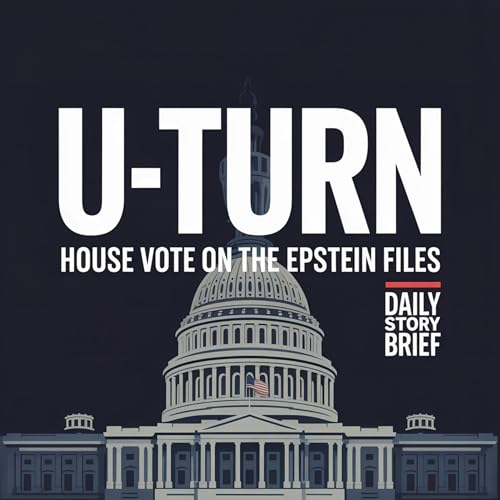In this episode of Daily Story Brief, we unpack the most controversial “peace plan” yet to emerge from the war in Ukraine—a secretive 28-point framework drafted not in official ministries, but in private jets and back-channel meetings between two unconventional power brokers.
The hosts walk you through the origins of the proposal, tracing how U.S. special envoy Steve Witkoff, a New York real estate developer and personal ally of the White House, teamed up with Russian economic envoy Kirill Dmitriev, the Kremlin-linked head of Russia’s sovereign wealth fund, to build a plan that bypassed traditional diplomatic channels and largely excluded both Europe and Ukraine from the initial drafting process.
From there, the episode dives into the core substance of the framework: massive territorial concessions by Ukraine, permanent loss of Crimea and the entire Donbas, a frozen front line in Kherson and Zaporizhia, and even a demilitarized buffer zone that becomes Russian territory on the map. Ukraine would accept strict caps on its armed forces, surrender long-range weapons, and enshrine permanent NATO non-membership in its own constitution, while NATO itself would formally close its doors to Ukraine.
In exchange, Ukraine is offered “NATO-like” security guarantees that sound strong on paper but are carefully written to remain ambiguous in practice. The hosts break down what those guarantees actually mean, how far they really go, and the fine print that voids them if Ukraine ever tries to retake its lost territories by force. They explore the central paradox: a shield that protects a smaller Ukraine, but also chains it to a new map it can never legally challenge.
The episode then turns to the money. You’ll hear how hundreds of billions in frozen Russian assets become the engine of a huge reconstruction package—structured in ways that would deliver significant profits to U.S.-led ventures—and how the plan offers Moscow a staged return from isolation: sanctions relief, a path back to the G8, and a sweeping U.S.–Russia economic partnership spanning energy, AI, data centers, and Arctic resources.
Alongside the legal and financial architecture, the hosts dissect the most explosive clause of all: a universal amnesty for “all parties involved in the conflict.” They examine how this could shield alleged war criminals and corrupt officials on both sides, shut down ongoing investigations into atrocities like Bucha, and force Ukrainians to trade justice and accountability for a ceasefire.
Throughout, you’ll hear reactions from Kyiv, European capitals, and Moscow—from Zelensky’s careful public tightrope walk to furious condemnation inside Ukraine, to European leaders warning of “capitulation,” to Kremlin-aligned commentators openly speculating about financial blackmail, coups, and even “heroic death” if Kyiv refuses to sign.
Finally, the hosts zoom out to the biggest question of all: does this 28-point blueprint represent a realistic path to ending the killing, or is it an updated version of Munich 1938—rewarding aggression, locking in imperial gains, and all but guaranteeing that today’s “peace” becomes tomorrow’s even larger war?
If you want to understand how one back-channel document could redraw the map of Europe, reshape Western unity, and test the limits of justice in the name of peace, this is an episode you don’t want to miss.
 Nov 26 202527 mins
Nov 26 202527 mins Nov 24 202536 mins
Nov 24 202536 mins 27 mins
27 mins Nov 20 202521 mins
Nov 20 202521 mins Nov 19 202527 mins
Nov 19 202527 mins 24 mins
24 mins 25 mins
25 mins Nov 16 202534 mins
Nov 16 202534 mins

